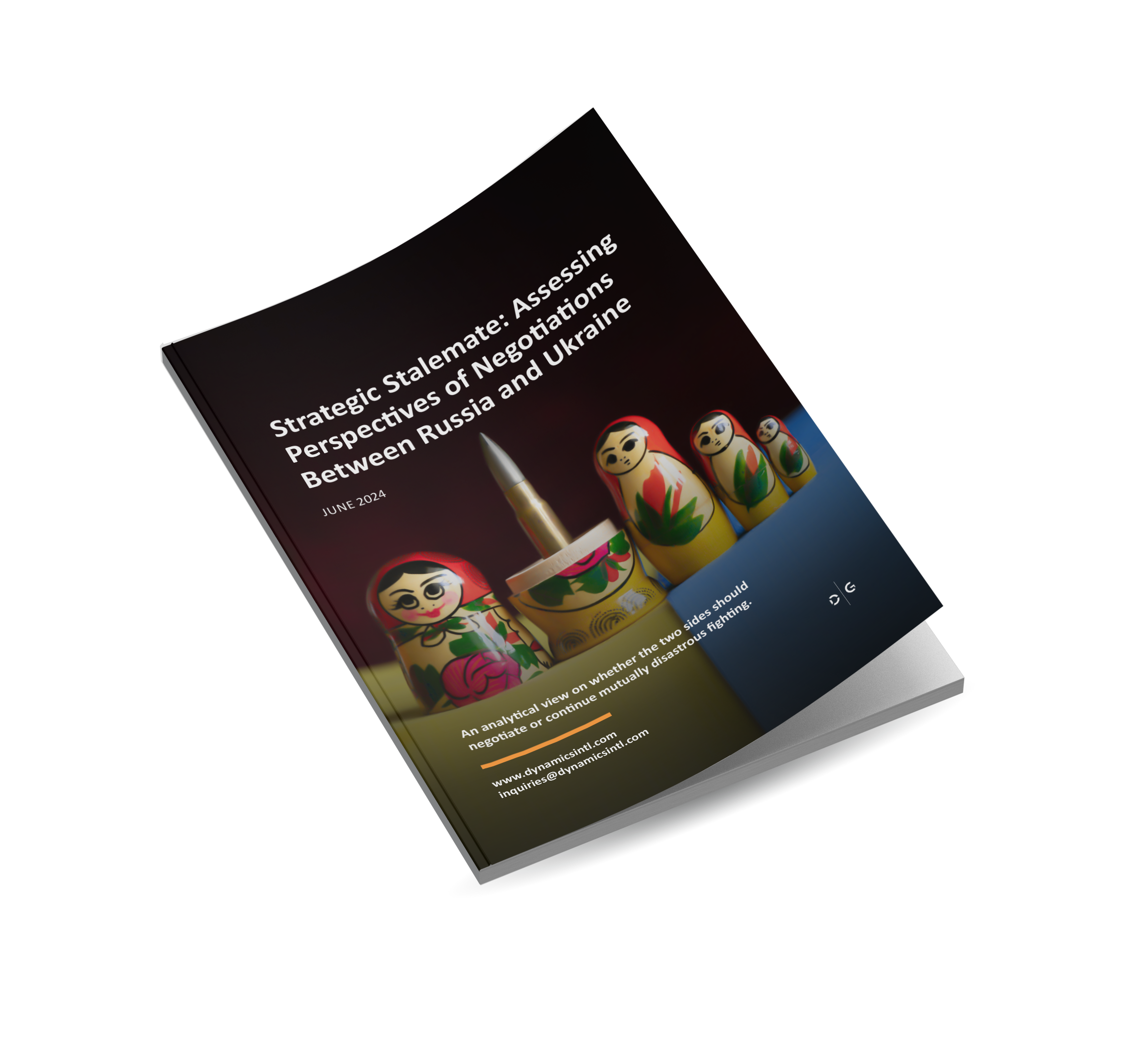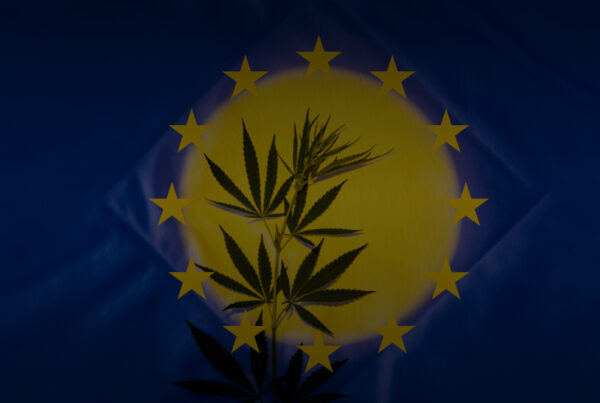Listen to the article – Strategic Stalemate: Assessing Perspectives of Negotiations Between Russia and Ukraine
The conflict between Ukraine and Russia, which began in 2014 with the annexation of Crimea and separatist uprisings in Luhansk and Donbass, escalated into a full-scale invasion by Russia in February 2022. This war has already caused massive loss of life, infrastructure damage and worsened socio-economic conditions in both countries, with significant global geopolitical implications.
The Russo-Ukrainian war requires negotiations to end the conflict. International players, including major global powers, are heavily invested in the outcome, influencing both countries’ strategic considerations. This research examines negotiation options using a structured framework based on negotiation theories by Robert Mnookin and Gabriella Blum, analyzing interests, alternatives, potential outcomes, implementation likelihood, and associated costs.
- Earlier Efforts and Current Status: By May 2024, indications emerged that Ukraine might engage in talks with Russia, but meaningful negotiations are not expected before late 2024 or early 2025. Past negotiations have failed due to disagreements, and both sides continue to prepare for talks from stronger positions. Despite planning a “peace summit” in June 2024, the likelihood of a near-term agreement remains low.
- Future Negotiation Prospects: Both Ukraine and Russia view negotiations as incentivizing the enemy, making talks currently unlikely. Significant changes in military or political circumstances, or external pressures from global powers, may eventually compel negotiations.
How can we help?
Intelligence Solutions
The combination of business, market and strategic intelligence ensures result-driven outcomes for our customers.
Risk management
Risk management through the responsibility of taking risk ownership while ensuring safety and security
- Positions and Prioritized Interests: Ukraine demands the complete withdrawal of Russian troops, recognition of its pre-2014 borders, and compensation for war damages. Russia seeks Ukrainian neutrality, recognition of Crimea, and the independence of Donetsk and Luhansk. External players like the U.S., EU, China, and the Global South have their own strategic interests, impacting the negotiation dynamics.
- Best Alternatives to a Negotiated Agreement (BATNA): Ukraine’s alternatives include continued military engagement and leveraging international support. Russia’s alternatives involve consolidating control over occupied territories and using economic leverage. Both face significant risks and limitations, influenced by the strategic interests of external players.
- Potential Gains and Losses from a Negotiated Agreement: Ukraine could gain from ceasing hostilities, territorial recovery, economic recovery, and humanitarian relief but might lose political sovereignty and territorial integrity. Russia could benefit from lifting sanctions, securing territorial claims, and reducing military expenditures but risks perceived weakness and unfulfilled broader geopolitical aims. The U.S., EU, China, and Global South also have significant potential gains and losses, making negotiations strategically important.
- Likelihood of Agreement Implementation: Ukraine has a high likelihood of implementing an agreement due to strong motivations and Western support but faces internal challenges. Russia’s likelihood is moderate, with motivations tempered by a history of non-compliance and domestic hardliners. The U.S., EU, and China show high likelihoods due to strategic interests, while the Global South has a moderate likelihood influenced by economic dependencies and neutrality pressures. An overall assessment of the implementation likelihood is, however, positive once the negotiations commence.
- Costs of Negotiations: Ukraine and Russia face high costs, including political, financial, and humanitarian dimensions. The U.S. and EU also face substantial costs but find them acceptable given their strategic interests. China’s costs are moderate and manageable, while the Global South faces high economic and humanitarian costs.
- Zone of Potential Agreement (ZOPA): Finding common ground requires identifying concessions without compromising core interests of the parties. Potential ZOPA elements include ceasefires, international peacekeeping, economic aid, and long-term negotiation frameworks balancing the interests of Ukraine, Russia, and external powers.
- Strategic Stalemate and the Role of External Powers: Currently, neither side is ready to compromise, creating a strategic stalemate. External mediation by global powers, particularly the U.S. and China, is essential for meaningful negotiations. Historical precedents like Korea and Germany provide useful frameworks for potential resolutions.
- Scenarios: Potential scenarios include a Korean-style ceasefire, a German-style comprehensive peace plan, a hybrid approach, continued stalemate, or a comprehensive peace plan mediated by global powers with the latter being the most plausible.
The analysis concludes that peace negotiations are inevitable but highly challenging. External mediation is crucial for a sustainable resolution with a comprehensive peace plan mediated by global powers offering the best opportunity to end hostilities and stabilize the region. The process will be complex. Significant international pressure and internal management will be needed in order to reach and then implement any potential negotiated agreement.
01
Foreword
01
Foreword
Ukraine and Russia have been engaged in armed conflict for the past decade. In 2014, two regions – Luhansk and Donbass, effectively broke away from Ukraine through separatist uprisings, while Russia openly annexed the Crimean Peninsula following a staged and internationally unrecognized referendum.
What started as clandestine Russian support for separatists and a virtually bloodless annexation of Crimea has evolved into an all-out, large-scale invasion in February 2022. Hundreds of thousands of lives have been lost on both sides, massive destruction of infrastructure and the industrial base has continued to escalate while social and economic conditions have worsened drastically in both countries. The geopolitical ramifications of this conflict have major impacts on nearly all global powers, while its historical consequences are yet to be studied and assessed.
It is known that all wars end through negotiations, albeit sometimes through capitulation, which is nonetheless a form of negotiation. The Russo-Ukrainian war is unlikely to be an exception to this rule. Both sides will need to engage in talks to negotiate an end to the bloodshed. Numerous international players, including major global powers, have vested interests in this conflict. Their influence on the process and the overall situation is essential for both countries in their strategic considerations whether to negotiate or continue the war.
The following research examines some options for the negotiations between Russia and Ukraine, focusing on various aspects of the conflict, the involvement of external players, and the forces shaping the geopolitical landscape. The analysis employs a structured framework inspired by the negotiation theories of two Harvard professors – Robert Mnookin and Gabriella Blum,[1] which considers Prioritized Interests, Best Alternatives to a Negotiated Agreement (BATNA), Potential Outcomes, Agreement Implementation, and the Costs for all sides associated with negotiations.
The analysis incorporates perspectives from various global stakeholders, including the United States, the European Union, and China, reflecting their strategic interests and potential influences on the conflict’s resolution. The methodology involves a review of current geopolitical analyses, policy documents, and international responses to the conflict to provide a broad understanding of the negotiation potential dynamics and the probable regional implications.
Annex (Simplified Table of Parties’ Interests, which show potential common grounds to initiate the talks)
Slide to see the whole table
| Interest Area | Russia | Ukraine | United States | European Union | China | Global South | Common Ground | Partially Common | Contradictions |
| Regional Influence | Expand influence, counter NATO | Maintain sovereignty, prevent Russian influence | Limit Russian influence, support Ukraine's sovereignty | Support democratic Ukraine, counter Russian influence | Balance relations, strategic partnership with Russia | Maintain neutrality, avoid single power dominance | - | - | Directly opposed interests: Russia vs. Ukraine, US, EU |
| Strategic Security | Prevent NATO expansion, ensure Ukraine not a threat | Secure international guarantees, ensure safety of citizens | Support Ukraine's security, prevent Russian aggression | Ensure European stability, prevent Russian threats | Ensure global stability, balance security concerns | Avoid entanglement, maintain regional stability | Security guarantees for Ukraine | Global stability | Russia's prevention of NATO expansion vs. Ukraine's security guarantees |
| Territorial Integrity | Maintain control over Crimea and separatist regions | Restore control over Crimea and Donbas | Support Ukraine's territorial integrity | Support Ukraine's territorial integrity | Support stability, may not explicitly support territorial demands | Maintain global stability, access to resources | - | - | Directly opposed interests: Russia vs. Ukraine, US, EU |
| Economic Stability | Lift sanctions, stabilize economy | Achieve economic growth, rebuild infrastructure | Stabilize global economy, support Ukraine's economic recovery | Reduce dependency on Russian gas, ensure energy security | Ensure global economic growth, access to resources | Access to food and energy, maintain economic stability | Stabilize global economy | Reduce dependency on Russian energy | Sanctions on Russia vs. economic recovery needs of Russia and Ukraine |
| Global Leadership & Stability | Restore global power status, counter Western dominance | Ensure sovereignty and international law | Demonstrate global leadership, support international law | Promote democratic values, ensure regional stability | Prefer stable international environment | Maintain balanced relations, ensure development aid | Global stability | Promote international law and stability | Russia's interest in countering Western dominance vs. US and EU leadership goals |
| Sovereignty and Alliances | Ensure Ukrainian neutrality, prevent NATO/EU integration | Retain full control, aim to join EU/NATO | Support Ukraine's sovereignty, counter Russian influence | Support Ukraine's EU integration, promote democratic governance | Balance relations, avoid direct confrontation | Avoid alignment, maintain development aid | - | Maintain stability and balanced relations | Russia's demand for neutrality vs. Ukraine's aspirations to join EU/NATO |







